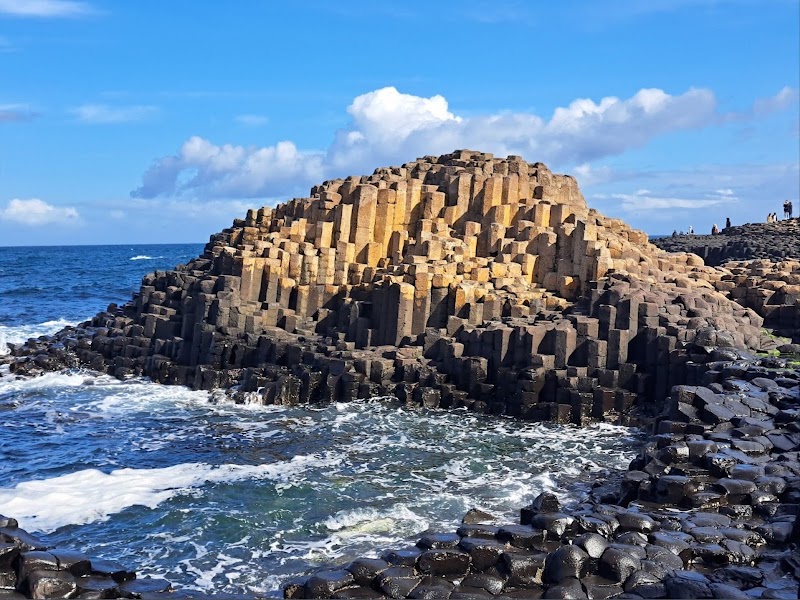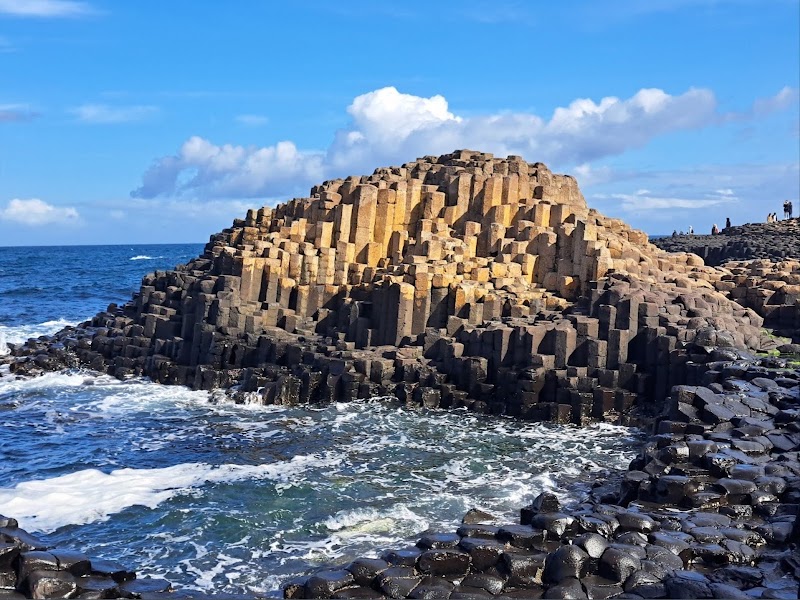Did you know that Northern Ireland's Giant's Causeway, an enchanting marvel of 40,000 interlocking basalt columns, beckons over a million visitors each year? This UNESCO World Heritage site, alongside the awe-inspiring Causeway Coast and the historic Bushmills Distillery, forms the fulcrum of Northern Ireland's most charming region.
Whether you're a passionate hiker, a history buff, or a nature enthusiast, possessing a detailed tourist map of the Belfast region will be an indispensable aid in planning your adventure. On this voyage of exploration, every twist unravels a scene more captivating than the last, and your map will guide you towards the most unforgettable experiences.
Booking.comExploring the Wonders of Giant's Causeway
There's so much more to the Giant's Causeway than merely being a UNESCO world heritage site. The unique geological formations, captivating folklore, and breathtaking coastal scenery offer a mesmerizing amalgamation of nature, history, and culture. Here are some of the standout attractions you can't afford to miss on your Skye Island trip.
- The Grand Causeway
- The Giant's Boot
- The Chimney Stacks
- The Shepherd's Steps
- The Giant's Gate
- The Honeycomb
The Grand Causeway: A Geological Marvel
Positioned at the heart of this natural spectacle, The Grand Causeway is a testament to the power of ancient volcanic activities. The sight of these impeccably shaped hexagonal basalt columns is truly awe-inspiring. As you tread carefully on these interlocking stones, you're essentially walking on a natural artwork that took millions of years to sculpt.
The Giant's Boot and the Legend of Finn McCool
Legend suggests that the Causeway was the stomping ground of the giant Finn McCool, and The Giant's Boot, an oddly shaped rock resembling a boot, is believed to be a piece of Finn's footwear. This piece of folklore adds a delightful layer of magic and mystery to the Causeway, weaving geology and culture in a fascinating way.
The Chimney Stacks: A Sky-High Spectacle
Just off the coast, the Chimney Stacks rise as a group of tall, slender columns sprouting out from the ocean, creating a unique silhouette against the sky. Standing like sentinels, they serve as a reminder of the volcanic past and the forces that shaped this stunning landscape.
The Shepherd's Steps: A Trail to Remember
For the adventurous, the Shepherd's Steps offer an unforgettable experience. This steep flight of 162 steps escorts you up the cliff face to a panoramic view of the entire Causeway Coast. This is also an excellent starting point for a longer coastal walk, allowing you to delve deeper into the area using a tourist map.
The Giant's Gate: A Natural Masterpiece
As you pass through the Giant's Gate, you'll find yourself between an imposing basalt gate, leading you to the sea. This natural gate, shaped by the relentless waves over thousands of years, stands as a testament to the power of erosion.
The Honeycomb: A Structure Like No Other
The Honeycomb is a densely packed collection of hexagonal columns, aptly named for its resemblance to a honeycomb. Due to its unique layout and intricate design, this specific formation is one of the most photographed spots in the Giant's Causeway. It truly is a marvel of natural architecture.

Practical Information for Visiting Giant's Causeway
Transportation and Mobility
Reaching the Giant's Causeway is a breeze, whether you prefer to self-drive, avail of public transportation, or join a guided tour. If you're driving, ample parking is available at the visitor centre, but be mindful that during peak season it can fill up swiftly. For a more eco-friendly option, consider taking the Translink bus service from Belfast or Derry, which offers direct routes to the Giant's Causeway.
Schedules and Prices
The Giant's Causeway Visitor Centre operates daily from 9:30 am to 5 pm. However, the actual causeway stones are accessible 24/7, giving you the liberty to explore at your own pace. The entry fee for the visitor centre is £12.50 for adults, £6.25 for children, and £31.25 for a family pass (two adults and up to three children). The fee encompasses access to the exhibition, an optional guided tour, and parking.
Safety Tips
While the Giant's Causeway is generally safe, it's pertinent to remember that it is a natural formation subject to weather conditions. Be mindful of high winds and slippery conditions, especially during wet weather. It is advisable to wear sturdy shoes and always maintain a safe distance from the edges of the cliffs.
Practical Recommendations
Although the Giant's Causeway is a year-round destination, the optimal time to visit is during the spring and summer months when the weather is most favourable. However, if you are fond of fewer crowds and a more tranquil experience, consider visiting in the off-peak season. Lastly, don't forget to bring your camera - the breathtaking vistas and unique formations offer endless photographic opportunities!

Frequently Asked Questions about Giant's Causeway
Here are some specific questions and answers to assist you in navigating your visit to the Giant's Causeway and ensuring you make the most of your experience.
1. Are there facilities for people with disabilities at Giant's Causeway?
Yes, the Giant's Causeway provides facilities for visitors with disabilities. There are wheelchair-accessible trails leading up to the stones, and a shuttle bus is available from the visitor center to the Causeway for those with mobility issues. Audio guides are also available in various formats for visually and hearing-impaired visitors.
2. What is the best time to visit Giant's Causeway to avoid crowds?
The best times to visit to avoid crowds are early in the morning or late in the afternoon. Even better if you can plan your visit during the shoulder seasons (spring or autumn), as it tends to be less crowded than the summer months.
3. Can I take a guided tour of the Giant's Causeway?
Yes, guided tours are available and they provide a fantastic way to learn more about the unique geological formation and its legends. Ranger-led walks are provided daily and are included in the admission price. You can also hire a private guide for a more personalized experience.
4. Are there any restrictions for drone usage at Giant's Causeway?
Drone usage is strictly controlled at the Giant's Causeway due to its UNESCO World Heritage status. You're required to obtain a permit from the National Trust before flying a drone over the Causeway.
5. Is wild camping allowed near Giant's Causeway?
No, wild camping is not permitted in the vicinity of the Giant's Causeway. However, there are several campgrounds and caravan parks nearby where you can book a pitch.
6. Is it possible to see any wildlife at Giant's Causeway?
While the Causeway is primarily celebrated for its geology, there's also wildlife to be appreciated. You might spot seabirds such as fulmars, guillemots, and kittiwakes, especially during the breeding season. On rare occasions, seals, dolphins, and even whales have been spotted offshore.


